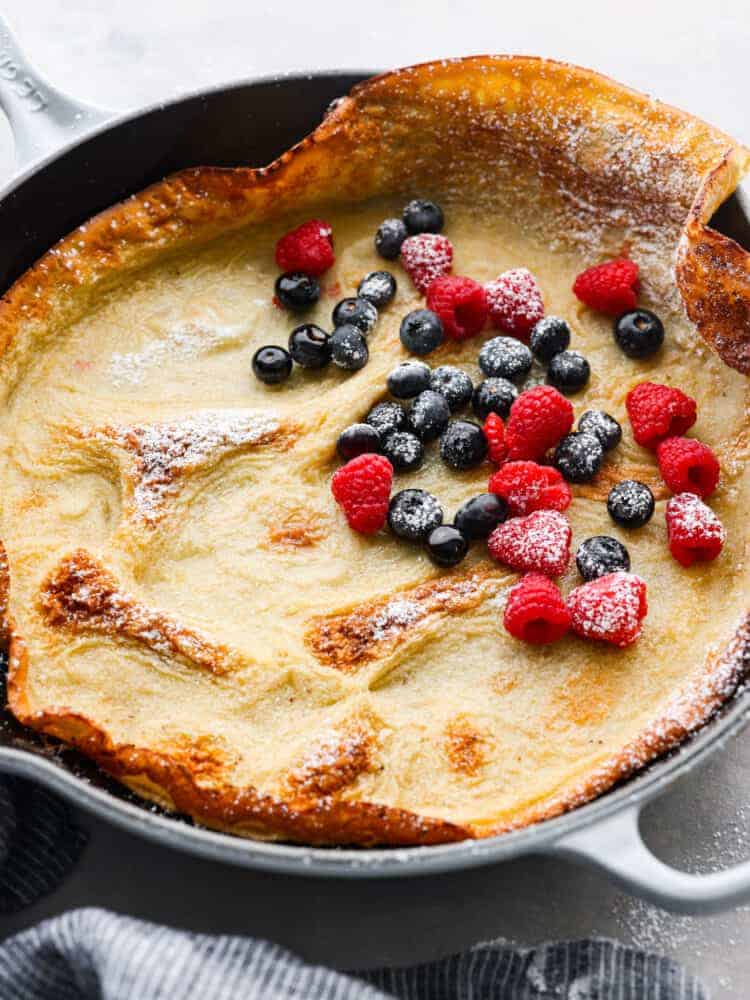This website may contain affiliate links and advertising so that we can provide recipes to you. Read my privacy policy.
Light, fluffy, and deliciously oversized, this Dutch baby pancake is sure to please at the breakfast table! Add all of your favorite pancake toppings for a tasty treat the whole family will go crazy over.
Since breakfast is the most important meal of the day, start things off right with a few of my favorite recipes! (In addition to this amazing Dutch baby) you can’t go wrong with pancakes, buttermilk syrup, bacon, and some fluffy scrambled eggs!
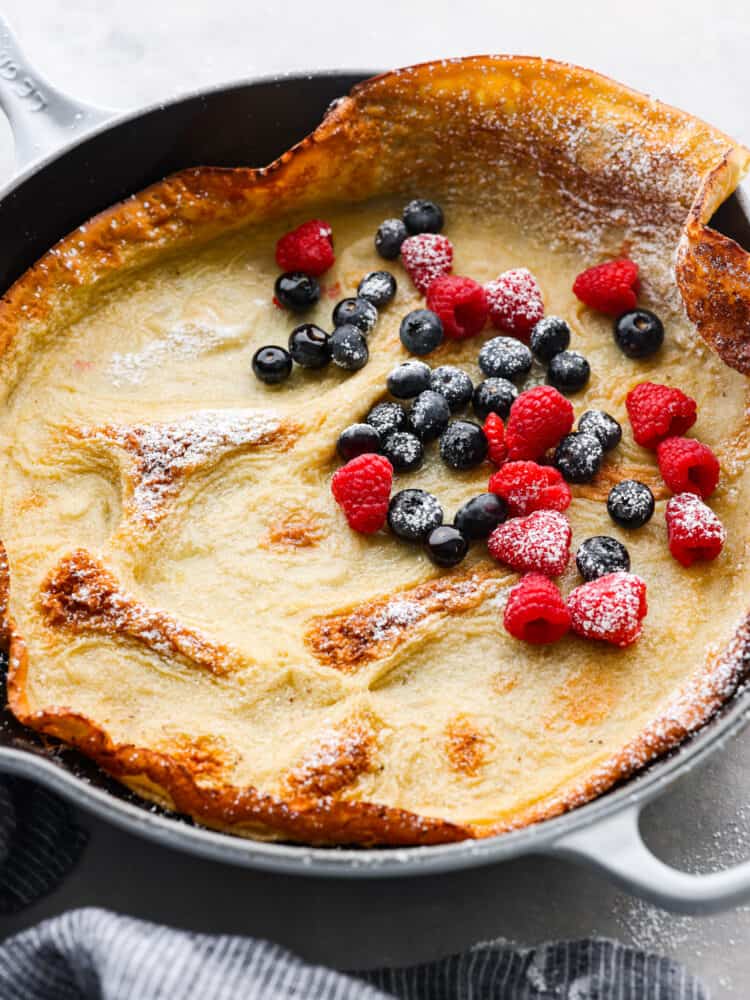
Homemade Dutch Baby Recipe
If you’ve never tried a Dutch baby before, you’re in for a (delicious) treat! It’s a pretty popular brunch item- once you try it for yourself you’ll understand the hype! Also known as a German pancake, Dutch babies are made in a skillet and have a soft, chewy texture.
Imagine a mashup of crepes, pancakes, and Yorkshire pudding! Dutch babies have a consistency with the best qualities of all three. They’re perfectly sweet and fluffy! Now, a Dutch baby pancake is big enough for 2 people to share, but I definitely won’t judge if you just want to keep one to yourself. (Speaking from experience.) Top it off with fresh fruit, whipped cream, maple syrup, you name it! They’re so tasty! Make some now, you can thank me later.
Ingredients You’ll Need
Ditch the pancake mix and switch up breakfast with this quick and easy Dutch baby recipe! This is one of my favorite breakfast recipes because it uses such simple ingredients. Gather all of your favorite toppings and get ready to feast! Note: all measurements can be found below in the recipe card.
- Eggs: I used large eggs at room temperature! These give your Dutch baby its signature chewy texture.
- Milk: Whole milk works best here! The high fat content will make your pancake rich and tender.
- Vanilla Extract: Whatever vanilla you have on hand will work, but if you want to take your Dutch baby to the next level, use pure vanilla extract! Since Dutch babies use so few ingredients, using high-quality vanilla will make a huge difference in the overall flavor.
- Sugar: I used regular white sugar to sweeten up my pancakes.
- Flour: I used all-purpose flour! You want to make sure you use a flour with a low protein content or else your Dutch baby will turn out rubbery and dense.
- Salt: Salt enhances the overall flavor of the pancake and also keeps it from tasting bland.
- Butter: Butter adds an extra layer of richness and flavor!
How to Make a Dutch Baby Pancake
Making a Dutch baby is kind of like making a big popover. You have to make sure you do all of the steps in the correct order to ensure you end up with a light and fluffy pancake, but they’re all super easy to do! This has quickly become a favorite breakfast of mine and I know you’ll love it just as much.
- Preheat Oven and Skillet: Preheat your oven to 425℉ and place your 10-inch cast iron skillet in the oven to heat up. Make room for your skillet on the center rack of the oven, removing any racks that might be above it. (Your Dutch baby will blow up like a balloon in the oven and deflate once taken out, so you don’t want it hitting any racks above.)
- Blend Ingredients: In a blender, add your eggs, milk, vanilla, sugar, flour, and salt. Blend for 10-15 seconds, stopping to scrape down the blender with a spatula. Continue to blend for another 5-10 seconds. This is a liquidy batter!
- Rest: Allow the batter to rest in the blender for 20-30 minutes.
- Melt Butter: Once batter is rested and ready, take the skillet out of the oven and place your butter into the hot skillet. Allow the butter to melt and completely coat the entire pan.
- Add Batter: Pour your batter over the buttered skillet and rotate to coat evenly. Place skillet back into your oven and check after 10-15 minutes. Your Dutch baby should puff up, and be evenly browned across the top.
- Cool and Serve: Once your Dutch baby is ready and golden brown, remove the skillet from the oven. Let it cool somewhat before removing to serve.
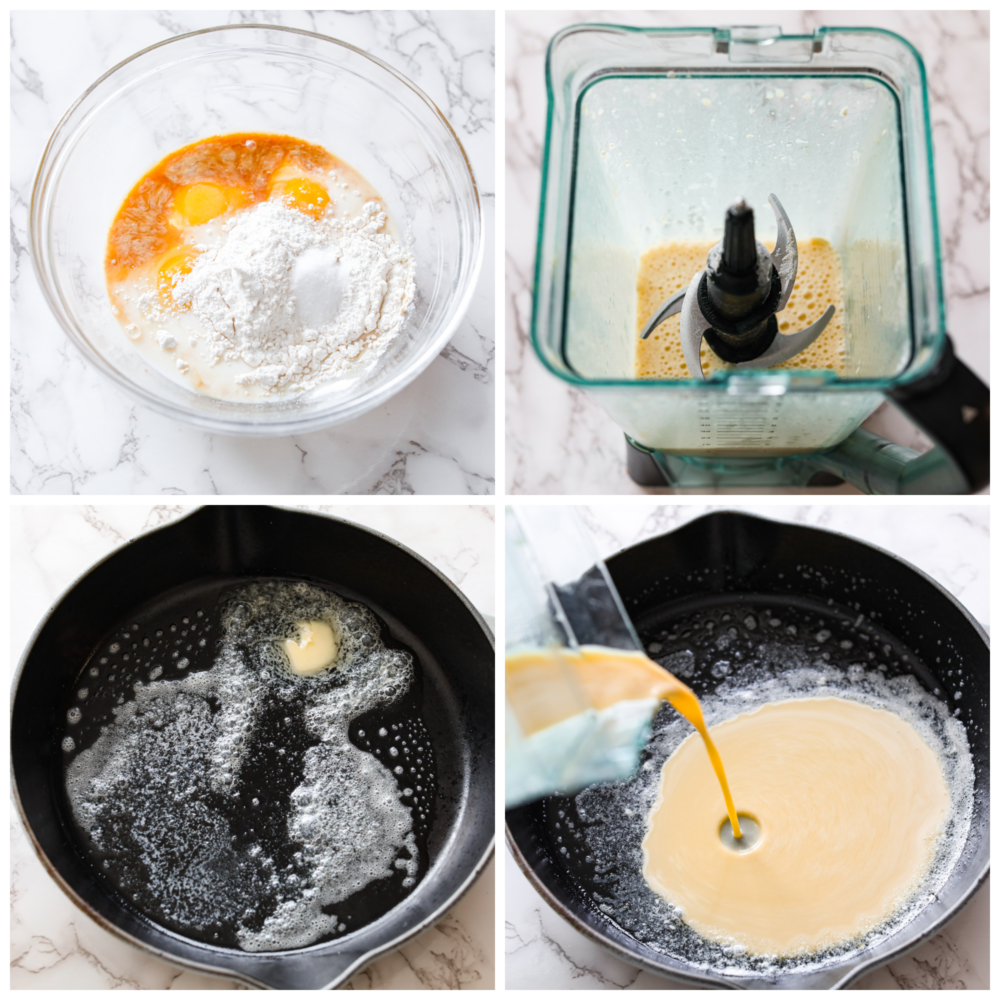
Toppings and Serving Tips
Here are a few quick and easy ways to customize your Dutch baby! These pancakes are super versatile, so use all of your favorite toppings!
- Fruit in the Bottom: I have seen some made using sliced peaches or apples in the bottom of the pan with the butter so you have a delicious cooked fruit surprise waiting at the bottom of your Dutch baby!
- Eat Straight From the Pan: You can eat the Dutch baby straight from the pan if you like, or plate it.
- Savory Toppings: If you are more of a fan of savory breakfasts, take out the sugar and vanilla, and top this with some sausage or bacon.
- Sweet Toppings: Sprinkle with confectioners’ sugar, add blueberries, strawberries, or raspberries, dust with cinnamon, or add a squeeze of lemon juice for some bright, zesty flavor! Adding caramel sauce or chocolate syrup on top is a great idea as well!
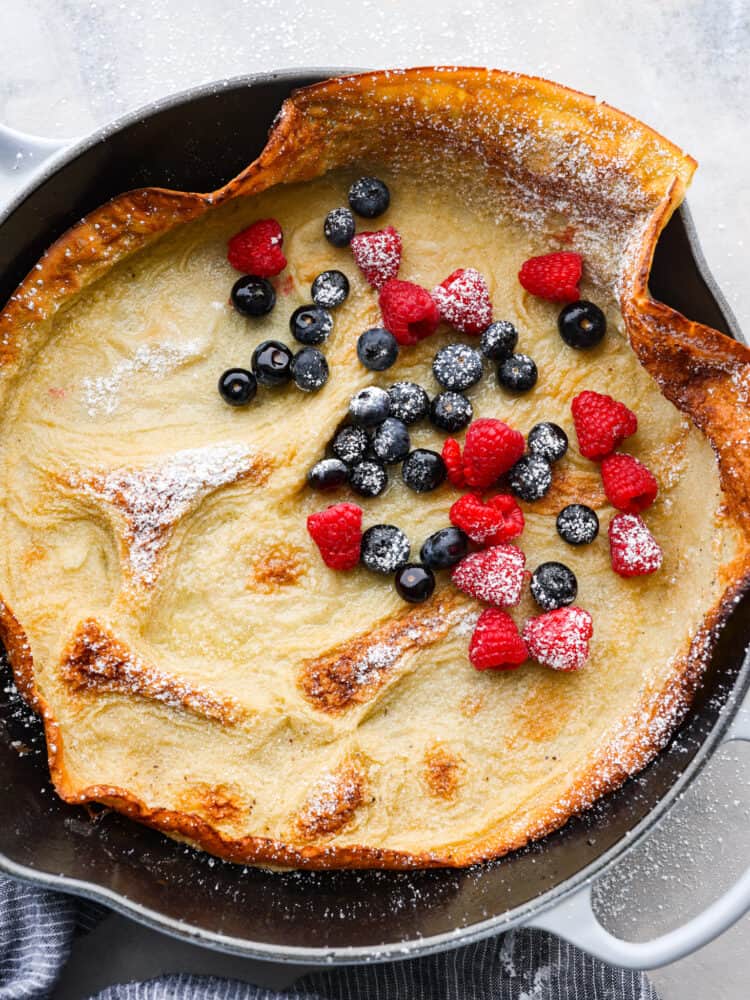
How Long Will a Dutch Baby Last?
I would only recommend making and eating these fresh, but you can keep them in the fridge for a couple days if you’d like.
Storing Leftover Batter: You can make and keep the batter refrigerated for 2-3 days, just be sure to whisk it up before using again.
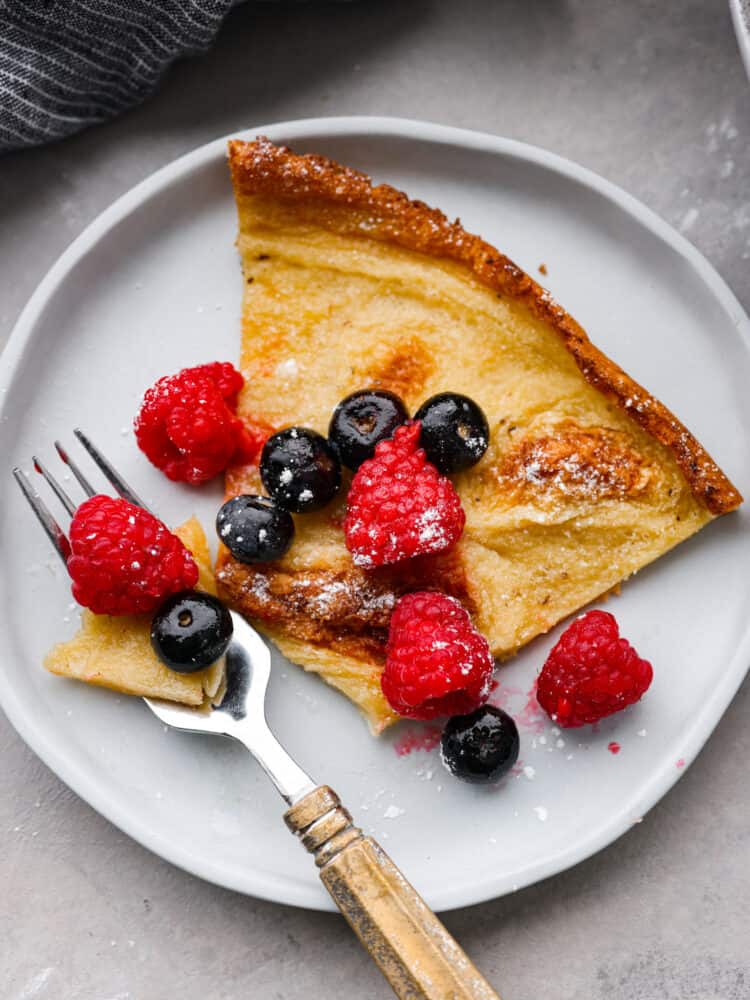
-
Preheat your oven to 425℉ and place your skillet in the oven to heat up. Make room for your skillet on the center rack of the oven, removing any racks that might be above it. (your Dutch baby will blow up like a balloon in the oven and deflate once taken out, so you don’t want it hitting any racks above.)
-
In a blender, add your eggs, milk, vanilla, sugar, flour, and salt. Blend for 10-15 seconds, stopping to scrape down the blender with a spatula, and continue to blend for another 5-10 seconds. This is a liquidy batter!
-
Allow the batter to rest in the blender for 20-30 minutes.
-
Once batter is rested and ready, take the skillet out of the oven and place your butter into the hot skillet, allowing the butter to melt and completely coat the entire pan.
-
Pour your batter over the buttered skillet and rotate to coat evenly. Place skillet back into your oven and check after 10-15 minutes. Your Dutch baby should puff up, and be evenly browned across the top.
-
Once your Dutch baby is ready, remove the skillet from the oven and let it cool somewhat before removing to serve.
-
These are best served fresh, with your favorite toppings, berries, whipped cream, syrup, chocolate drizzle, go crazy!
Serves: 2
Calories476kcal (24%)Carbohydrates46g (15%)Protein14g (28%)Fat26g (40%)Saturated Fat14g (70%)Polyunsaturated Fat2gMonounsaturated Fat7gTrans Fat1gCholesterol298mg (99%)Sodium1283mg (53%)Potassium228mg (7%)Fiber1g (4%)Sugar22g (24%)Vitamin A980IU (20%)Calcium123mg (12%)Iron3mg (17%)
All nutritional information is based on third party calculations and is only an estimate. Each recipe and nutritional value will vary depending on the brands you use, measuring methods and portion sizes per household.
